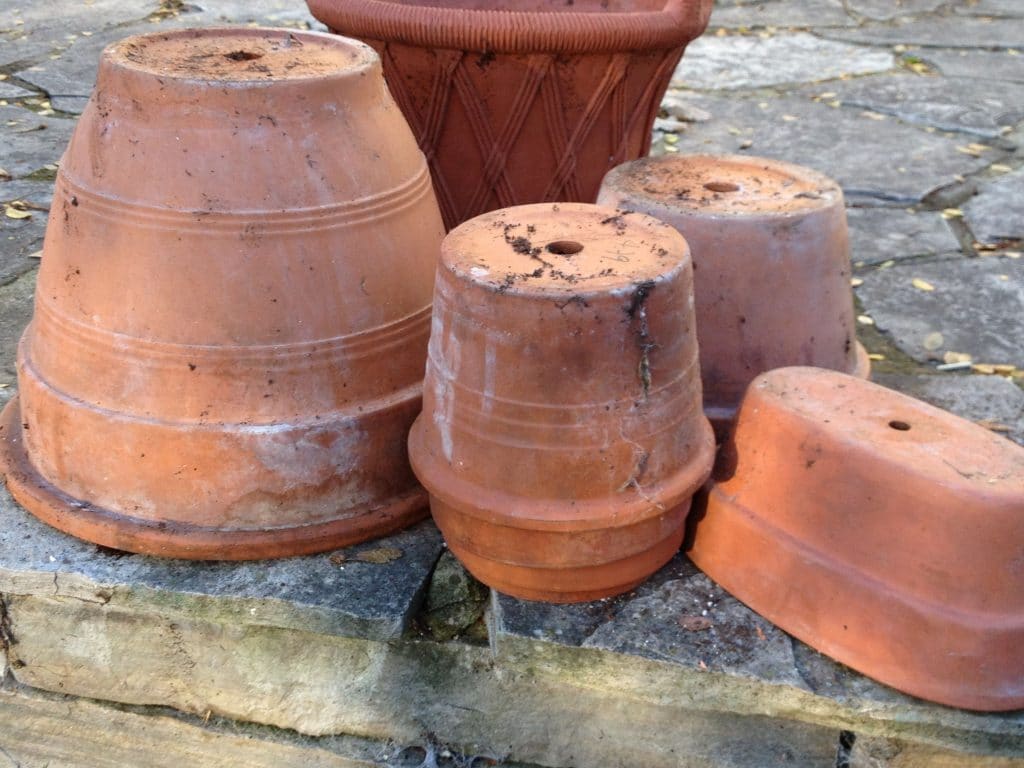
I went for a drive through Niagara vineyards this weekend as the suddenly warm and moist air turned the late fall landscape into a beautiful tapestry of muted colours. Every now and then, something brilliant appeared to catch my eye. In one vineyard, tall stands of late purple monkshood (for more about this perennial, see late bloomers in the garden ) stood against clusters of spreading sumacs with prominent scarlet cones. The purple and scarlet combination is a favourite of mine, and this was a beautiful display to find in the misty afternoon light. Sometimes a chance discovery of plants in a striking combination is the best inspiration for our own gardens.
Now returned home, there’s another warm day to get the garage tidied up and do something with all the pots I’ve emptied of summer vegetables and annuals. My small garage barely manages to hold the car and lawn mower through the winter, and there’s no floor space for stacks of smaller pots and large containers. These things must winter outdoors, and need to be prepared for low temperatures, ice and snow.
Most of my containers are clay and plastic, and each has its own challenges for outdoor storage. The clay pots must be emptied of soil and dried. If soil remains, or the container walls are saturated with water when deep frost arrives, moisture will freeze and shatter the clay. After spreading the removed soil mix over garden beds, I stack the clay pots upside down, nested into each other, and then place them on the wood deck against a walled corner, covering them with a heavy plastic shower curtain. This keeps snow and ice off them (even if some accumulates on top of the plastic sheet), and any moisture on the pots that remains can quickly evaporate. They go through winter dry and frozen, and I’ve never had any frost damage. Some of them are now 20 years old, and I’m glad to still have them as they develop increasing character.
Rigid plastic containers are not as easily kept outdoors. I prepare them in the same manner as the clay pots, and also stack them on the deck with a plastic sheet over top. But deep cold seems to cause the plastic to grow brittle. Over time, this results in cracks and chipped edges, shortening the number of seasons I can use them. I make a point of purchasing inexpensive plastic containers (usually in neutral taupe or black) so I can recycle them when their appearance is eventually too damaged.
What to do about concrete birdbaths? I know the best method for protecting them from frost exposure is to turn the bowls upside down, so ice won’t accumulate and cause expansion cracks in the concrete. But I’m willing to risk some cracks in the bowls and leave them upright. I know there will be a few warm days in winter when ice in the bowls melts around the edges, offering a drink to thirsty birds. I’ve been doing this for many years and although there are fine line cracks in the concrete bowls, so far no leaks. I like to keep the birds happy.









